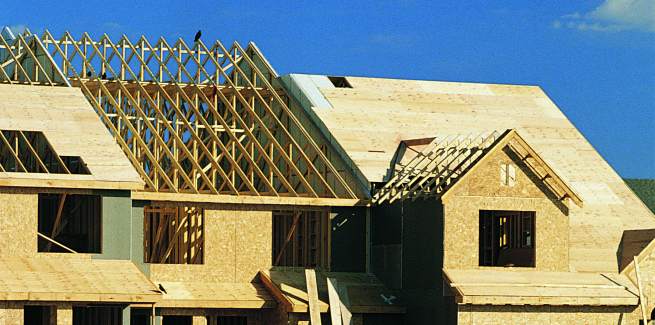According to Building Approvals data released by the Australian Bureau of Statistics (ABS) for the month of August, there was a 1.6 per cent drop in total dwellings approved on the previous month (in seasonally adjusted terms).
Overall, there were 13,691 dwellings approved in August, with the “open” states of Western Australia and Queensland leading the charge (showing a 34 per cent monthly increase and 8 per cent increase, respectively).
Dwelling approvals fell in Tasmania (-26.2 per cent), NSW (-14.2 per cent) and South Australia (-4.8 per cent).
However, in number terms, Victoria saw the largest number of dwellings approved, coming in at 5,181 (a 1.0 per cent drop on July).
Values creeping up
While the number of overall dwellings fell in August, the value of total building approved rose 18.1 per cent in August, in seasonally adjusted terms.
Notably, the value of non-residential building rose 40.7 per cent, driven by large public projects in Queensland and the Northern Territory.
The value of total residential building also rose in August (4.4 per cent).
This was partly driven by an increase in the value of residential alterations and additions (7.0 per cent), which rose to its highest level in four years (since April 2016).
Detached houses on the rise
A total of 9,312 private sector houses were approved in August – a 4.8 per cent rise on the previous month, following an 8.6 per cent increase in July. This marked the second month in a row that the number of detached housing had grown, following eight-year lows in the early COVID-19 period.
Again, Western Australia and Queensland saw the sharpest increases in private sector houses being approved – rising by 35 per cent and 14 per cent, respectively, on the previous month.
While detached housing demand stayed strong, the previous month’s surge in apartment approvals dropped off dramatically.
In July, there had been a 22 per cent increase in the number of private sector dwellings, excluding houses, to 4,684. However, in August, this dropped by 11 per cent to 4,206.
Daniel Rossi, director of construction statistics at the ABS, said: “The August results indicate increasing demand for detached housing following the relaxation of restrictions in most states and territories. However, approvals for apartments remain weak, at near eight-year lows.”
The HomeBuilder impact
Speaking of the figures, Angela Lillicrap, the Housing Industry Association (HIA) economist, commented that this could be attributed to the government’s HomeBuilder grant.
She said: “The impact of HomeBuilder is now emerging in the ABS building approvals data, and there is a significant divergence between the outlook for detached and multi-unit dwellings.
“After a number of years of decline, building approvals in Western Australia increased by 32.9 per cent in the month of August. This is consistent with other leading indicators that show that HomeBuilder and the state government’s building bonus have stimulated demand for new homes,” she said.
“Western Australia also had a very short pipeline of work, and these approvals will lead to the commencement of building work on the ground within weeks. This surge lifts the number of approvals to levels last experienced in 2018,” Ms Lilicrap continued.
“Queensland also saw a 13.4 per cent increase in detached building approvals, confirming that it is also experiencing a surge in new work entering the building pipeline, also from a low base.
“Other regions are yet to see the pickup in activity due to HomeBuilder. This reflects a range of factors, including longer processing times with local councils and delays in the finalisation of building plans between the customer and builder, and a stronger pipeline of existing work.
“New home sales data also suggests that detached house approvals will continue to grow over coming months and across all jurisdictions.”
Touching on the reducing approvals for apartments, the HIA economist noted that approvals were 14.1 per cent below the figure from August 2019.
“The small number of multi-unit projects that are gaining approval at this time are likely to have commenced the planning and building approval process years ago,” she said.
“The multi-unit market has cooled since 2018, after several years of record levels of construction. Activity in this part of the market is likely to remain depressed until there is greater certainty about the pathway for overseas migration to be restored,” concluded Ms Lillicrap.
[Related: Mortgage approvals surge in ‘last hurrah’ for housing]
